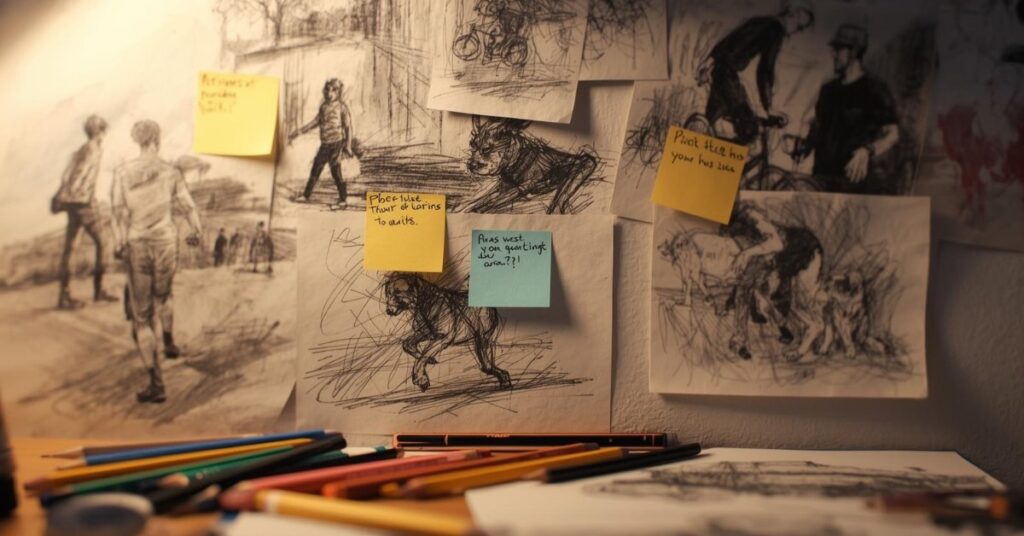Drawing from life is like charging your animation battery in the real world. When you sketch people on a bus, a dog at the park, or a barista at full speed, you’re not just making drawings—you’re building timing, weight, and appeal into your brain. The page becomes a rehearsal space where characters learn to breathe.
Why Life Drawing Works for Animators
Real bodies move with momentum, hesitation, and micro-adjustments—things photos tend to flatten. Life drawing forces you to capture the big idea quickly: the line of action, where the weight sits, and what story the pose tells. Even messy sketches teach your eye to simplify, decide, and commit.

That habit of choosing the right few lines becomes gold when you’re animating on a deadline and the performance needs to read at a glance.
Gesture First: The Line of Action Is the Story
Start every study with a single, sweeping line. That line is the energy of the pose: stretch vs. compress, pull vs. push, fall vs. catch. Once the flow is honest, you can hang anatomy on it—but the gesture comes first. Without it, you’re decorating a quiet idea.
- 30–60 second bursts. Fill a page with tiny beans and sticks; chase the feeling, not the details.
- 1–2 minute clarifiers. Add direction of the head, chest/hip tilt, and where the weight plants.
- 5 minute refinements. Indicate hands/feet shapes and a few folds that show stretch and squash.
When each time box gets a job, your drawings stop fighting themselves and start working like a team.
From Sketchbook to Shot: Translating Observations into Animation
Your quick studies become a library of believable moves. A jogger’s downbeat tells you where to squash; a violinist’s shoulder shows overlap; a toddler’s pause before the run is pure anticipation. When a shot calls for a beat of truth, you’ll have seen it—and drawn it—before.

Carry those pages into blocking: steal the line of action, stage the weight clearly, and exaggerate only after the pose already reads.
Practical Routines You Can Start Today
- One page a day. Ten gestures from life (or from a livecam/street window) at 30–60s each.
- Theme your week. Hands on Monday, walks on Tuesday, seated poses Wednesday, kids/pets Thursday, cafés Friday.
- Annotate motion. Arrows for direction, little “down/up” marks for steps, dots where weight plants.
- Reflect. Circle two drawings and write one sentence about what worked (flow, weight, clarity).
Close the sketchbook by asking one question: “What did I notice today that I can use in my next shot?”
Want structured drills that turn daily sketches into stronger poses and timing?
Final Thoughts
Life drawing isn’t about perfect lines—it’s about honest ones. The more you practice in the wild, the more your characters feel like they belong in their worlds. Start small, keep it daily, and let the real world teach your animation to breathe.




























